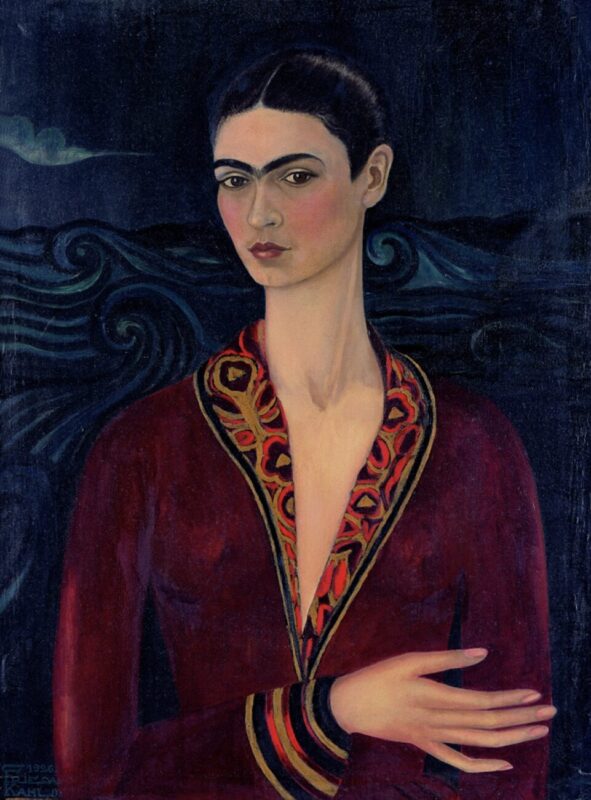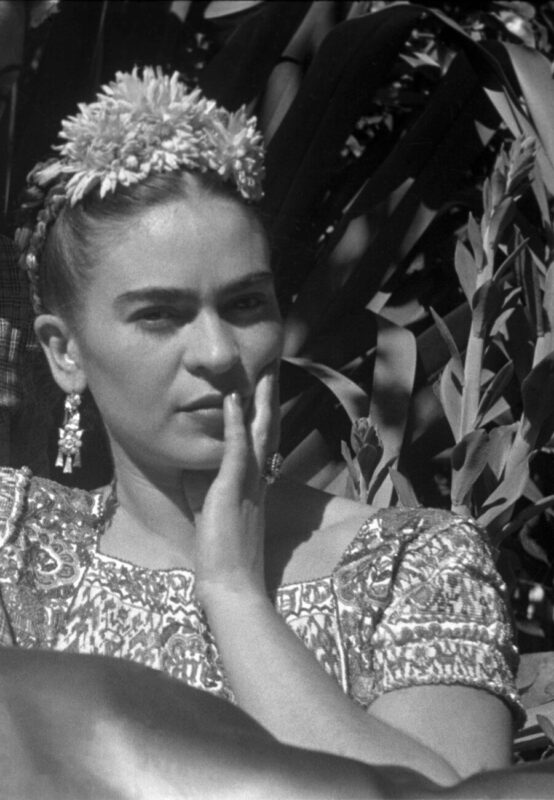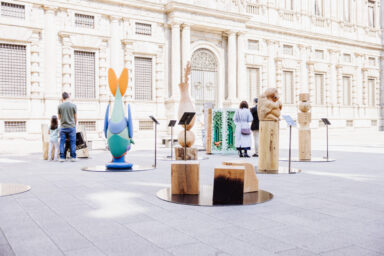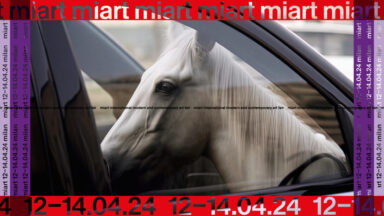PHOTOGRAPHS, COSTUMES, PAINTINGS AND LETTERS RETRACE FRIDA KAHLO’S HYBRID AND MULTI-TEMPORAL PERSONALITY AT FABBRICA DEL VAPORE’S EXHIBITION IN MILAN
Text by Fiammetta Cesana
During my last year at university in London, I was assigned with an essay about cultural hybridity and multi-temporal heterogeneity of Latin America. My case study comprised the works and life’s experience of the mythical Frida Kahlo, which had to be explored through these two big concepts theorized in the 90s by professor Nestor Garcìa Canclini. What the scholar tried to raise up in the questions of modernity was that the story of Latin America was not understandable as a linear succession of events, but as the coexistence of fragmentary pieces of cultural and historical elements. Over the 20th century indeed, the country, although absorbing part of Western modernization thanks to technological innovation, democratization and capitalist expansion, was still dealing with premodern political orders and traditional structures. This halfway condition brought Latin America to be, till today, a place of mixed realities, amid past and modern acknowledgements, liberal reforms and oligarchic regime, economic development and increase of poor and illiterate population, new technology and facilities and ancient rituals, as well as contemporary forms of art and ancestral totems… So by the time I was going through Canclini’s plenty of research to tackle my paper’s request, I found extraordinary how the complex identity of Frida Kahlo perfectly embraces such hybridity of culture and multi-temporality of Mexico. She became the human reflection of her whole beloved country.


Despite her great passion, vitality, and political activism, Frida suffered from continuous health issues due to polio and severe bodily fractures after a bus accident, and, also at romantic level, pains and infidelities kept injuring her marriage with the popular Communist artist Diego Riviera. Being stuck in-between sense of life and death, love and emptiness, and feeling attraction to worldwide evolution while never loosening attachment to local issues, she matured a highly variegated emotional spectrum expressed through the beauty and brutality of her artworks and fashion style. Frida was able to conquer the global art market thanks to the use of avant-garde techniques, like surrealism, which caught the attention of international artists and gallerists, including Picasso and Breton, yet maintaining her profound bond with her Mexican origins by representing indigenous figures and spiritual references. Also her aesthetic personality is commonly recognized as a unique embodiment of Latin American “mestizo” (hybridity): she usually wears typical Mexican accessories and dresses and proudly shows her characteristic monobrow, combining a feminine and masculine charm. Her androgynous style, though audacious for the time, became very attracting and fashionable. So Frida’s impressively beautiful and troubled existence, formed upon physical, sentimental and aesthetic discrepancies, brought her to be the most iconic artist and persona of Latin America’s modern times.

From the contrasted, unconventional union with Diego – famous for his nationalist murals inspired by Maya and Aztec works, church altarpieces, the decorations in cantinas […] and the experimental advances of European vanguards – to her opposition against Diaz’s regime, her participation to the Mexican Communist Party and then to the Mexican revolution in the 20s that also brought the artistic field to achieve greater autonomy, till her amazing wardrobe, cornucopia of Mexican traditional garments, flowery hats, colorful capes and long embroidered skirts… the more I dig into her Frida’s life experience, the more I realized the legacy of beauty and empowerment she left to us. She was not anything but perfect, but magical in all she did.
Her global influence is still living today, so much that retrospectives of the artist come up occupying galleries and museums all over the world. And this time is the turn of the multimedia art space in Milan, Fabbrica del Vapore, which from October 2020 till March 2021 is hosting the solo exhibition “Frida. Il Caos Dentro” (Frida, The Chaos Inside). The huge variety of projected operas during narrative screenings, displayed clothes, letters to her husband, and the detailed reproduction of the rooms of Casa Azùl, the worldwide famous Mexican maison build in French style in 1904 by Frida’s father and famous photographer of the time and where the woman spent most of her life, fully immerse visitors in the intriguing and intricate puzzle of Frida Kahlo’s exquisite mestizo.
Underlining the fashion timeless uniqueness of this woman, one of the core sections of the exhibition, with the curation of the Mexican costume’s expert Milagros Ancheita, is dedicated to traditional Mexican clothes which inspired Frida’s wardrobe. Then, “I colori dell’anima” (the colors of the soul) room, curated by Alejandra Matiz, leading the Fondation Leo Matiz of Bogotà, shows the amazing portraits of Frida by the one of the most important photographer of the 20th century, the Columbian Leonet Matiz Espinoza.


Among the variety of artworks you will discover in ‘Frida. il Caos Dentro’, such as the original 1938 opera by Frida ‘Piden Aeroplanos y les dan Alas de Petate’ and the watercolored lithographies by Diego Rivera, also a great collection of stamps depicting Frida with different national emissions is showcased (read here our feature on how 50 international artists are using stamps as resistance form of art).
An exhibition full of surprises, unconventional (as Fabbrica del Vapore has always promised to be), and capable of making us discover the true spirit of this artist whose magnetic energy still vibrates today in the social message that fashion and art are committed to pursuing. A journey into the life and beautiful confusion of Frida (how else could the experience of a brilliant artist be?), that after having only been able to read and write about it at uni, finally allows me to know her up close in all her facets, from the unforgettable features of Frida’s face, masterfully captured by Matiz, to her wide spiritual and chromatic spectrum, reflected through her canvas, home, wardrobe, and above all through the profundity of her heart’s tones.

‘Frida. Il Caos Dentro’
Fabbrica del Vapore
Milan
Till March 2021


